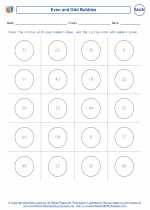Odd and Even Numbers
In mathematics, numbers are categorized as either odd or even. Understanding the difference between odd and even numbers is an important concept in elementary math.
Even Numbers
An even number is a number that is exactly divisible by 2. In other words, when an even number is divided by 2, the remainder is 0. The last digit of an even number is always 0, 2, 4, 6, or 8. Examples of even numbers include 2, 4, 6, 8, 10, and so on.
Odd Numbers
An odd number is a number that is not exactly divisible by 2. When an odd number is divided by 2, the remainder is always 1. The last digit of an odd number is always 1, 3, 5, 7, or 9. Examples of odd numbers include 1, 3, 5, 7, 9, and so on.
Identifying Odd and Even Numbers
To determine whether a number is odd or even, you can simply check the last digit of the number. If the last digit is 0, 2, 4, 6, or 8, then the number is even. If the last digit is 1, 3, 5, 7, or 9, then the number is odd.
Importance of Odd and Even Numbers
Understanding odd and even numbers is important in various mathematical operations, such as addition, subtraction, multiplication, and division. For example, when adding two even numbers, the result is always an even number. When multiplying an odd number by another odd number, the result is always an odd number.
.◂Math Worksheets and Study Guides Second Grade. Odd and Even

 Worksheet/Answer key
Worksheet/Answer key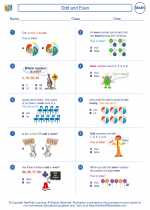
 Worksheet/Answer key
Worksheet/Answer key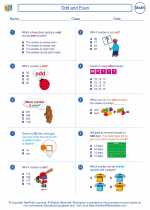
 Worksheet/Answer key
Worksheet/Answer key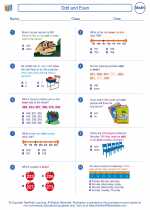
 Worksheet/Answer key
Worksheet/Answer key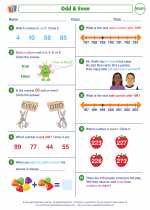
 Worksheet/Answer key
Worksheet/Answer key